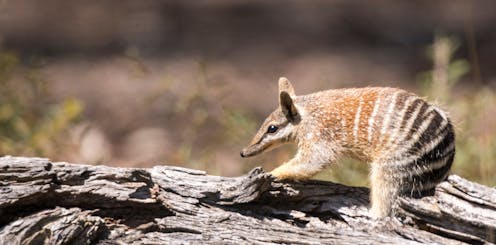 Shutterstock
ShutterstockAustralia is a world-leader in species extinction and environmental decline. So great is the problem, the federal government now wants to harness money from the private sector to pay for nature repair.
Under the government’s new “nature repair market”, those who run projects to restore and protect the environment are rewarded with biodiversity credits. These credits can be sold to private buyers, such as corporations wanting to meet environmental goals.
The nature repair market is similar in many ways to Australia’s existing carbon credit scheme. So, examining the extent to which carbon projects actually protect biodiversity is important as the government sets up the nature repair market. This was the focus of our new research.
Alarmingly, we found Australia’s carbon credit scheme largely fails to protect threatened species, despite assumptions to the contrary. The findings provide cautionary lessons for the nature repair scheme.
Spotlight on the carbon credit scheme
Australia’s carbon credit scheme encourages activities that reduce carbon. They include planting trees, reducing animal grazing on vegetation, or retaining vegetation instead of cutting it down.
Project proponents earn credits for carbon reduction, which can then be sold on a carbon market.
The scheme also purports to offer “non-carbon” benefits. These include increasing biodiversity and expanding habitats for native species. Indeed, biodiversity conservation has underpinned the carbon credit scheme since it began in 2011.
But does the carbon scheme actually benefit biodiversity?
To answer this question, we overlaid the locations of carbon-reduction projects with the locations of habitat for threatened plants and animals species. We then scored the level of degradation of each habitat, and identified the processes imperilling the threatened species.
So what did we find? Threatened species most in need of habitat restoration are the least likely to have their habitat restored under the carbon credit scheme.
Projects under the scheme are primarily located in arid parts of Australia not suitable for growing crops – mostly vast cattle grazing leases. Carbon projects here involve inexpensive activities such as removing some cattle or managing weeds.
These areas support habitat for only 6% of Australia’s threatened species. In other words, vegetation loss here generally doesn’t threaten species’ survival.
In contrast, just 20% of carbon projects take place on productive agricultural land which supports nearly half of Australia’s threatened species. In these areas, property values are high and landholders can earn good money from farming. That means carbon-reduction projects are often less financially attractive than other land uses, so their number and size is limited.
So what’s the upshot? Australia’s carbon projects are concentrated in areas containing little threatened species habitat, rather than where threatened species live and most need protecting.
Government policies enable this perverse outcome, by giving preference to projects that can reduce carbon for the lowest cost. This has skewed projects towards unpopulated, relatively unproductive lands.
There’s an upside
It’s not all bad news, however. We found the carbon credit scheme may protect threatened species in some cases.
Almost one-third (or 525) of Australia’s threatened species live in habitat that overlaps with projects under the scheme.
In addition, five species whose habitat is not safeguarded in Australia’s protected areas, such as national parks, may also occur on land where carbon projects take place. A further 270 species with too-little protected habitat also overlap with the projects.
The potential for positive benefits can be seen by looking at the two regions with the largest concentration of carbon projects in Australia.
In the Murchison bioregion in Western Australia, a quarter of species rely on habitat that is not adequately protected elsewhere. In the Mulga bioregion in New South Wales and southwest Queensland, two-thirds of species rely on habitat inadequately protected elsewhere.
 The Mulga bioregion, one of two in Australia where the carbon credit scheme may protect threatened species.
Shutterstock
The Mulga bioregion, one of two in Australia where the carbon credit scheme may protect threatened species.
Shutterstock
Lessons for nature repair
Australia’s nature repair legislation came into effect in late 2023. It creates a framework for the nature repair market which is expected to launch early next year.
Our findings provide important lessons for this market. Most importantly, they show a lowest-cost approach to generating credits is unlikely to benefit biodiversity. It will drive projects to marginal areas that do not overlap the ranges of species threatened by habitat loss.
If nature repair investment is to prevent species extinctions, the Australian government must ensure taxpayer funds actually achieve these outcomes. The best way to do that is to speed up the progress of promised environmental law reform.
Likewise, as global conservation increasingly looks to private finance and biodiversity markets, we must ensure funds are delivered to where they are most needed.
Penny van Oosterzee is a Director of the Thiaki Rainforest Research Project, which generates Australian Carbon Credit Units as part of a restoration and research project in the Wet Tropics of Australia. Penny van Oosterzee has been a partner for two Australian Research Council projects.
Jayden Engert receives funding from the Australian Commonwealth Government through an Australian Government Research Training Program Scholarship.

 3 days ago
27
3 days ago
27


